A hilltop castle at the south-western end of a small hill in the centre of the eastern Totomi region, where the Tokaido is held.
The castle to which Imagawa Ujimasa fled after being expelled from Sunpu Castle, and which Yamauchi Kazutoyo rebuilt from a medieval to an early modern castle, is famous for the Ninomaru goten, which survives from the Edo period.
Japan’s first ‘wooden rebuilt tenshu‘.
| Alternate names | Unmu Castle, Matsuo Castle |
|---|---|
| Castle Type | Hilltop Castle |
| Tenshu | Wooden reconstruction tenshu |
| Tenshu Style | Early watchtower type keep, compound type with an attached turret, three levels and four storeys |
| Number of storeys | Triple-tiered tenshu |
| Castle configuration | Whirlpool ladder type |
| First castle builder | Asahina Yasuyoshi |
| First constructed | around 1512 |
The tenshu of Kakegawa Castle is a reconstructed tenshu, but the goten where the lord of the castle lived is an existing palace dating from the Edo period.
There are only four surviving Gotens in Japan, making it a valuable asset. It is a reminder of clan administration and the life of feudal lords during the Edo period.
Kakegawa Castle is famous as the castle that Yamauchi Kazutoyo rebuilt from a medieval war fortress into an early modern Shokuho-style castle, as well as the castle where Tokugawa Ieyasu drove the war lords of the Imagawa family to ruin.

The charms of Kakegawa Castle according to our own prejudices
- The place where Imagawa Ujimasa fled after being destroyed by the Takeda army
- Kakegawa Castle, the battlefield where the Imagawa clan, Daimyo of the Warring States period, perished.
- Rebuilt by Yamauchi Kazutoyo from a medieval castle to a Shokuho style castle.
- Ninomaru Palace is an existing palace that preserves the appearance of the Edo period.
- First wooden restored tenshu
- Located in the centre of Kakegawa for easy access.
This article introduces the highlights of Kakegawa Castle, its castle seal, and the history of Kakegawa Castle as a castle in the Warring States period.
Composition and sights of Kakegawa Castle

The area is now maintained as Kakegawa Castle Park.
The main attraction of Kakegawa Castle is the Ninomaru Goten, which date back to the Edo period. There are fewer of these than the existing Tenshu, and they are very valuable.
In addition to the goten, Kakegawa Castle has many other valuable buildings from the Edo period.
Ote-mon Gate and Guardhouse


The Ote-mon gate is a restored two-storey yagura mon.
Excavations for the construction of a road uncovered the foundations of foundation stones, a row of foundation stones for the guardhouse, and the foundations of an earthen wall.
However, as they obstructed the construction of the road, they were moved to their present location, about 50 metres north of the remains.
The Ote-mon guardhouse has been restored and moved to match the Ote-mon gate.
The Ote-mon guardhouse is an important local cultural property.
There are few surviving guardhouses and only about 10 in the whole country. After the abolition of the clan, it was used as a private house, which was taken over by the city in 1978 and moved to its current location in 1994.
 Load of this site
Load of this siteEven though it is a relocation, it is nice to see such buildings from the Edo period.
The moat around Kakegawa Castle
Most of the moat has now been filled in.
The moat of Kakegawa Castle is said to have been 3,450 metres long, and excavations carried out in connection with the construction of the castle tower area have revealed the full picture.
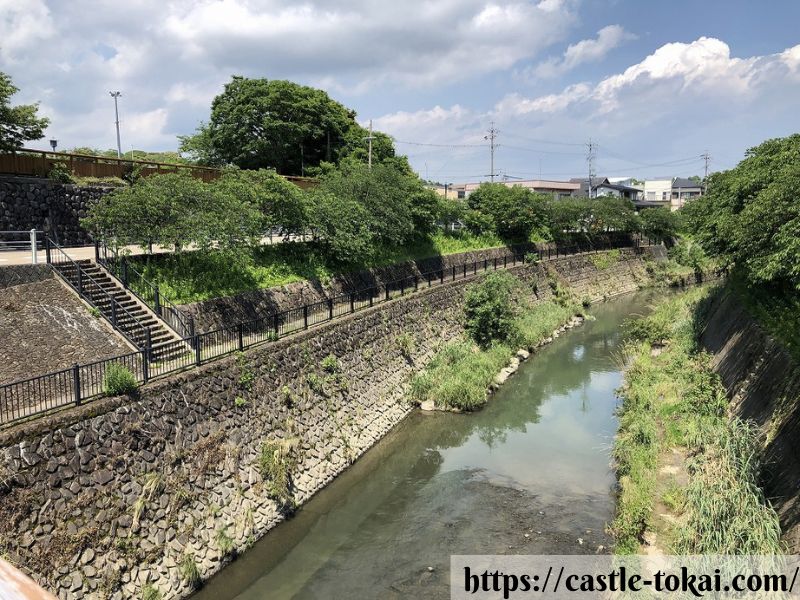

Sakasagawa (River)
The Sakasagawa river is a natural moat that protects Kakegawa Castle.
The Sakasagawa and the North Pond on the north side of the castle were connected by a canal to form a water moat for Kakegawa Castle.
Mikadukibori (Crescent Moat)
The crescent-shaped moat in front of Ninomaru Goten. It used to be 30 metres long, 19 metres wide at its widest point and 5 metres deep at its deepest point.



You can see that the crescent moat was a maru Umadashi (roundabout) that protected the entrance to the castle.




Sorobanbori (Soroban Moat)
A moat on the east side of the main circle.
It is estimated to have been 80 m long and 7 m deep when it was built.
In addition to these moats, a moat on the south side of the Honmaru, called Matsuo Pond, and the remains of an empty moat where the Ninomaru Tea House now stands have been discovered.
Honmaru (Main bailey)
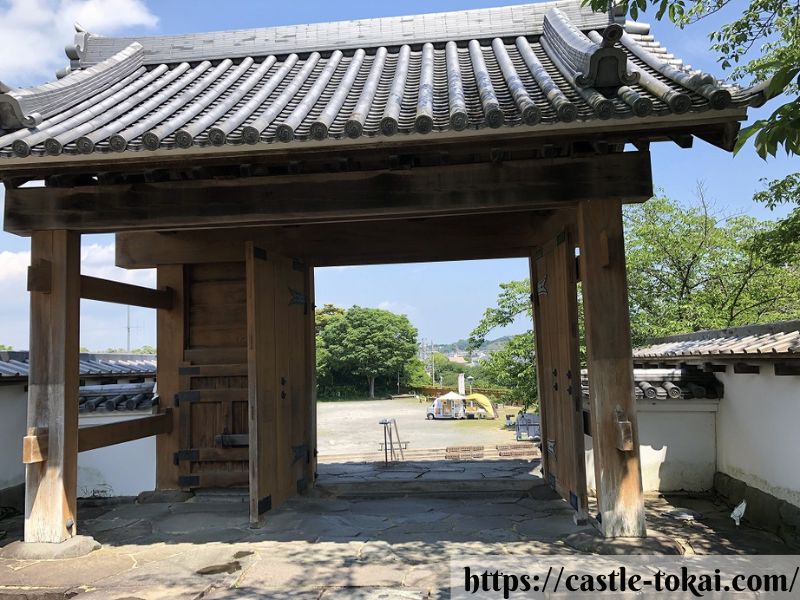

Yotsuashi mon (Four footed gate)
The remains of the gate have not been found, but it has been reconstructed from a drawing.
The ticket office is behind this gate.
Taiko Yagura: City Important Cultural Property
Originally a tower in San-no-maru, this tower was called Taiko Yagura because it announced the time with drums.
Originally a triple tower, it was rebuilt as a double tower after the Ansei earthquake.



After the abolition of the domain, it was moved for the fourth time to the east side of the present Honmaru.
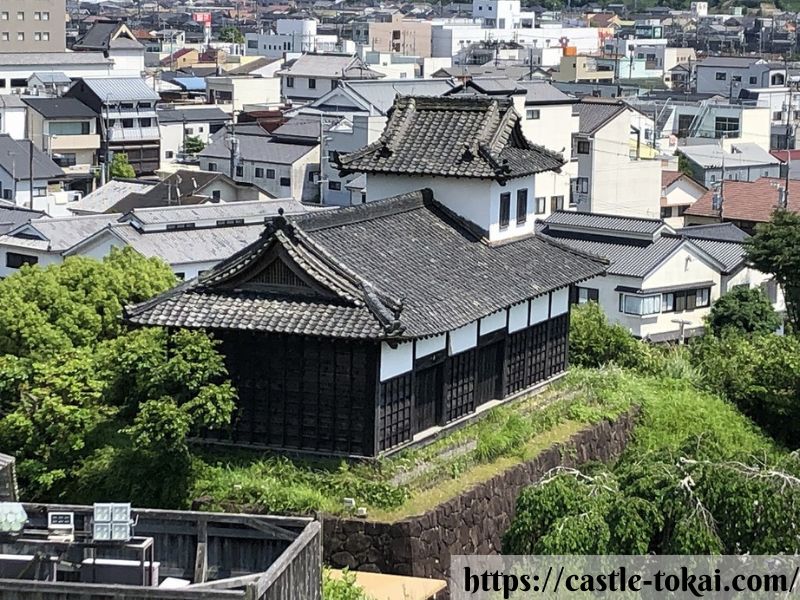

Tenshu Kuruwa (tenshu bailey)


The Tenshu Kuruwa became the tenshu kuruwa when Kazutoyo Yamauchi built the tenshu. Before that, it was the Honmaru Kuruwa and the Honmaru Goten was located here.
The tenshu of Kakegawa Castle is Japan’s first wooden reconstruction tensu.
Once inside, you are greeted by a statue of Yamauchi Kazutoyo riding a horse. Of course, there is also a museum inside, which gives a brief history of Kakegawa Castle.
View from the tenshu


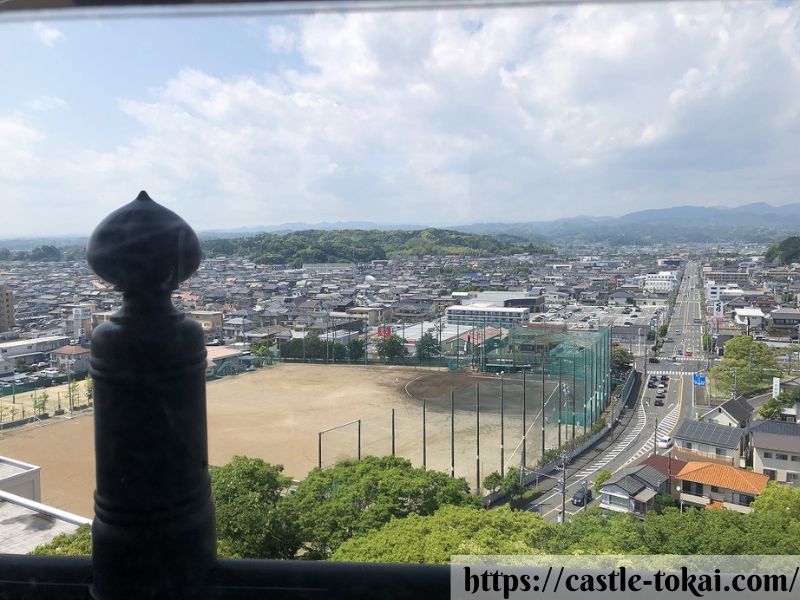





Did Kazutoyo Yamauchi, who built the keep, see the same view from the keep?
Of course, the townscape is very different now from what it used to be.


Shiofukiido (Foggy Well)
The third deepest well in Japan. 45 m deep.
Wells are the lifeline of a castle. When besieging a castle, it is very important to have a well in the area where you will eventually hide.



Did Imagawa Ujimasa, who was holed up in Kakegawa Castle, survive a long siege by drinking water from this well? It is imaginative.
Ninomaru (Second Bailey)
In addition to the existing Ninomaru Goten, Ninomaru also has the Ninomaru Teahouse.
There are only four castles left (Nijo Castle, Kochi Castle, Kawagoe Castle and Kakegawa Castle). They are extremely valuable.
At the Ninomaru Teahouse, the room where Fujii Sota and Hanyu Yoshiharu played is open to the public and tea can be enjoyed.
Ninomaru Goten (Palace): Listed as a national treasure.
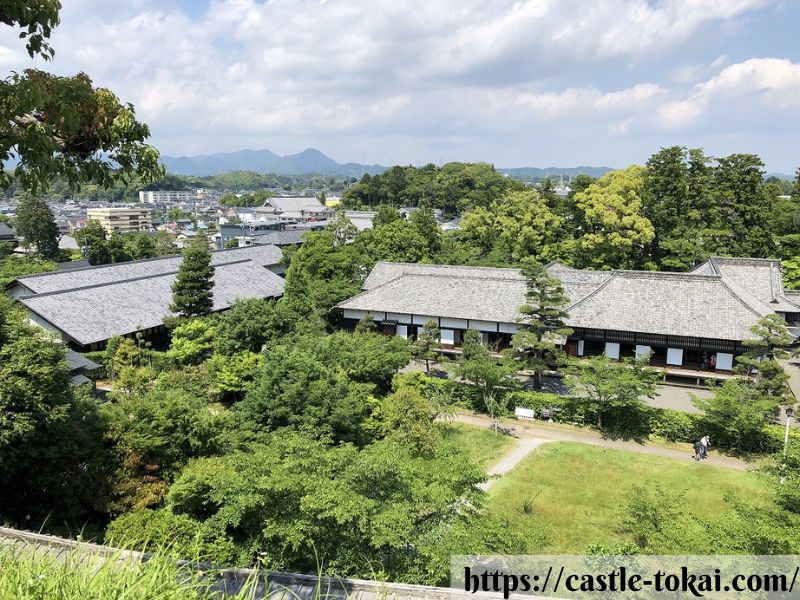

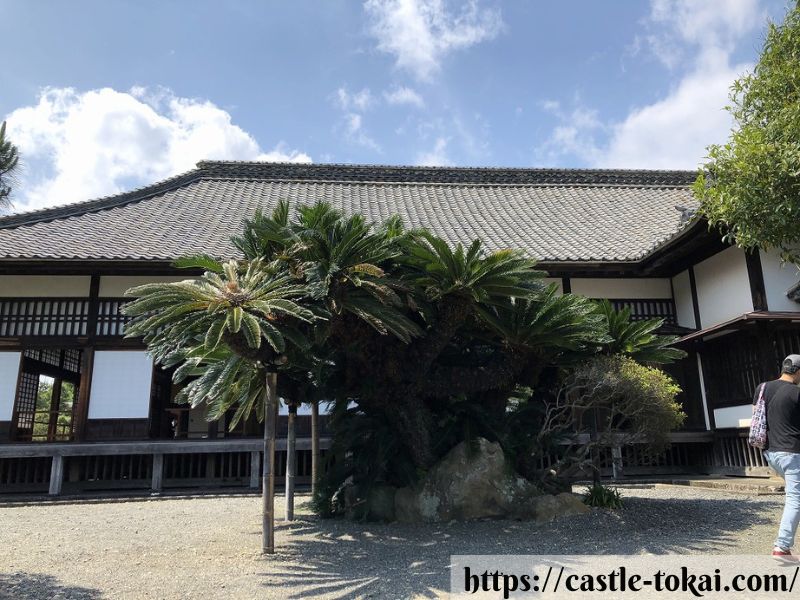

Ninomaru Goten of Kakegawa Castle is an existing goten.
It consists of seven shoin-zukuri style buildings with 20 rooms.
During the Meiji era (1868-1912) it was used as a school and for a time as a town hall after the abolition of the domain.
The following and other items are on display in the Goten
- Shoin (drawing room)
- Weapons and armour
- Excavated artefacts
- Models
- etc.
Unlike the large Shoin-style rooms at the back of the goten, which were used for the private life of the lord of the castle, the areas used for politics and administration are relatively small rooms (about four and a half tatami mats?). The rooms are relatively small (about four and a half tatami mats?).



The rooms used by the low-ranking officials are smaller and have lower floors!


Model of Kakegawa Castle in the time of Yamauchi Kazutoyo.
The main citadel and keep are on a hill one level higher, while the administrative buildings are on a lower level.



Seeing this, I realised that the basic form of a castle does not depend on whether it is in the East or the West. It is similar to Mott and Bailey.
Ninomaru Tea House
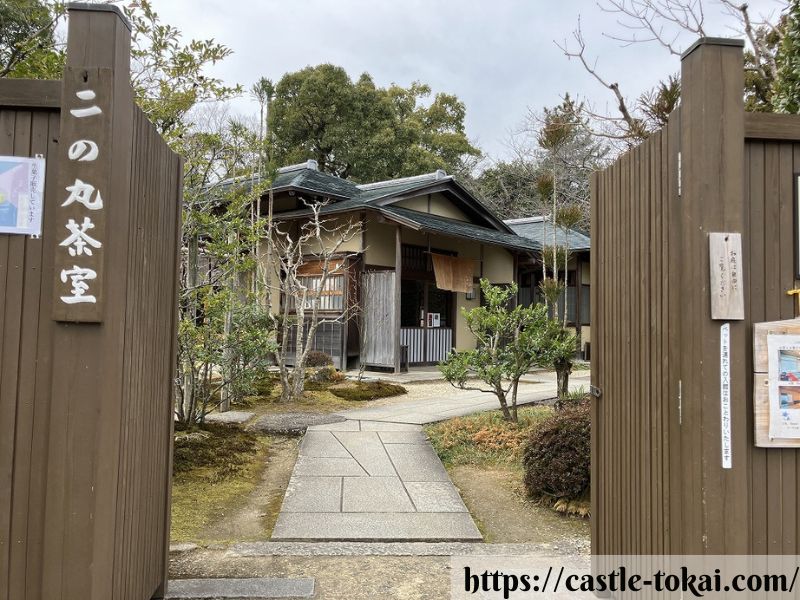

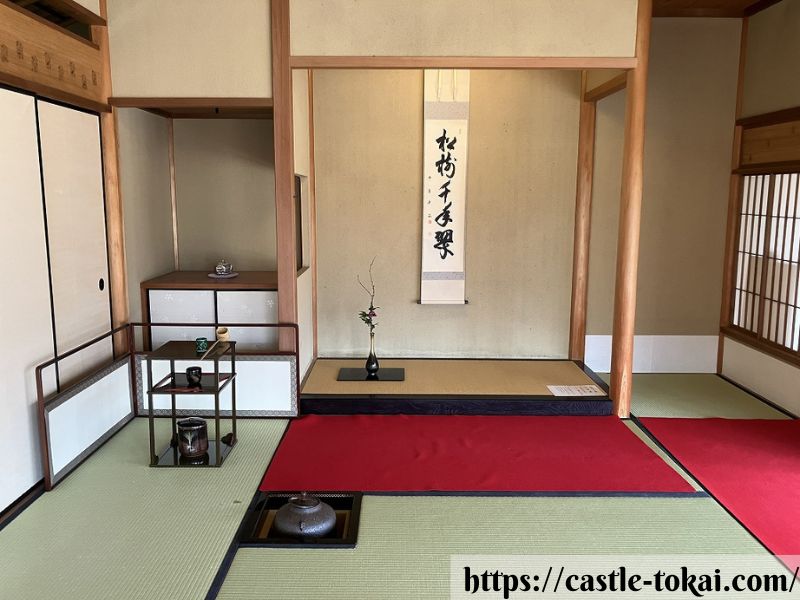

Ninomaru Tea Room
A tea room with a relaxed atmosphere.



Take a break and enjoy a cup of tea.
Tea room overlooking the garden.
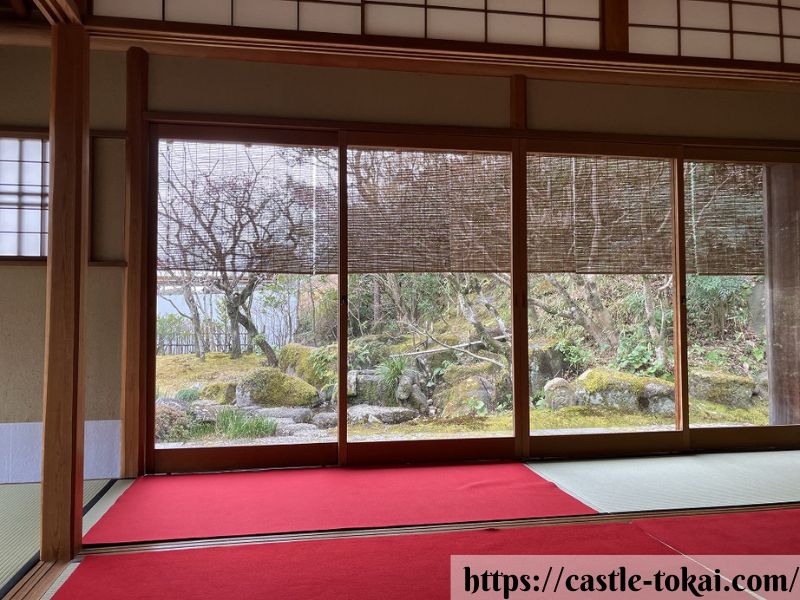

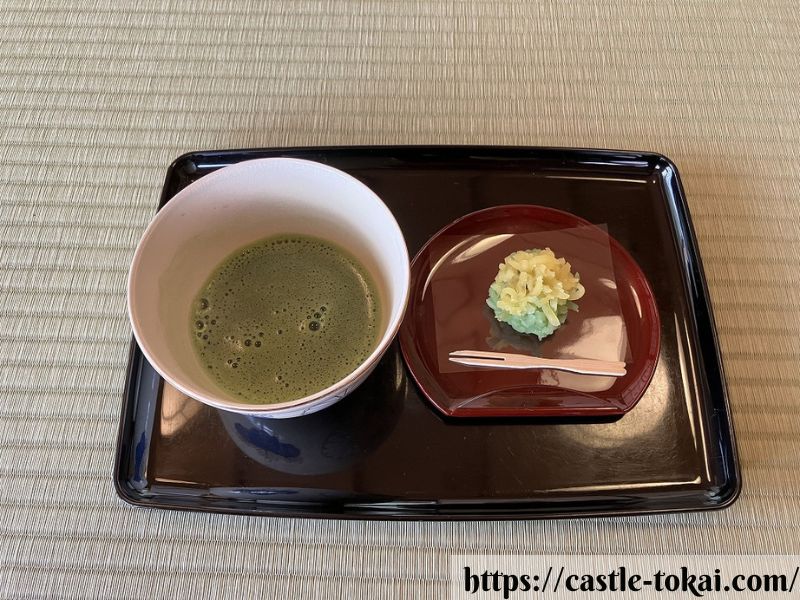

Tea has been served.
These sweets are from a local Japanese confectioner and are decorated with rape flowers.
Room where a game of shogi (Japanese chess) was played.
Due to the season we visited (February), the room was decorated with porcelain dolls.



Take your time to look around, take photos and advertise on social media!
I was told to take my time to look around, take photos and advertise on social media.
Access to Kakegawa Castle
By public transport etc.
Get off at JR Kakegawa station. Walk north for about 11 minutes (700 m).



You can walk towards the tenshu.
By car
Please use the nearby paid parking.
As the castle is located in the centre of Kakegawa, there are plenty of parking spaces in the area.

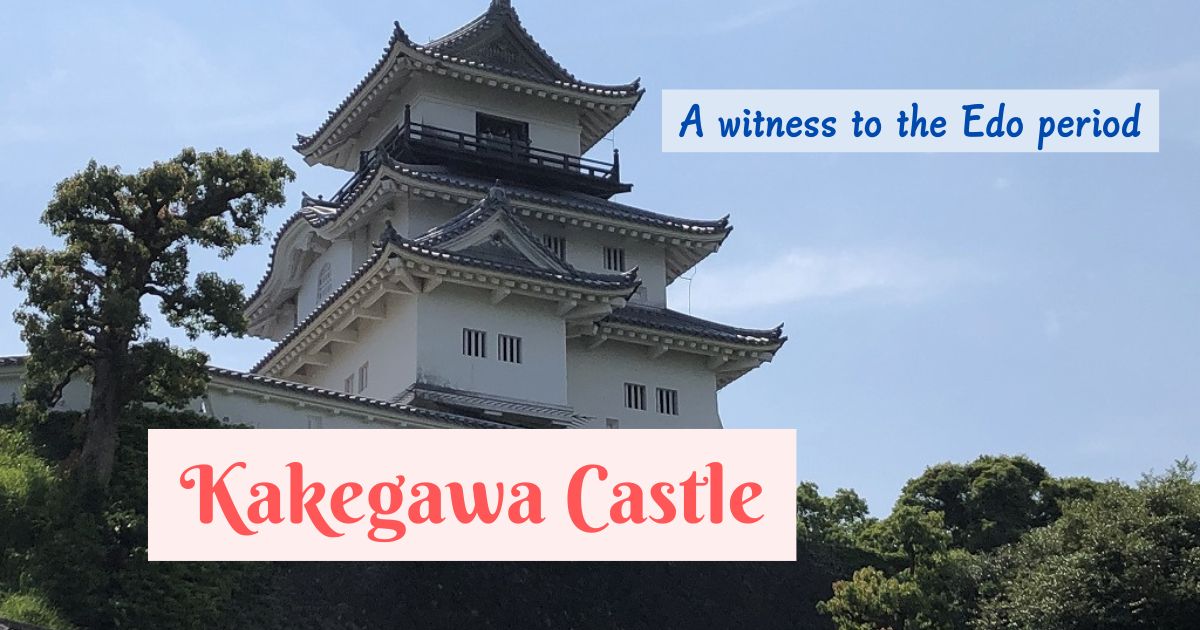
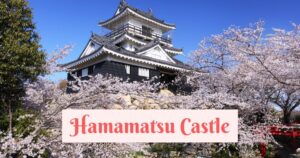
Comments